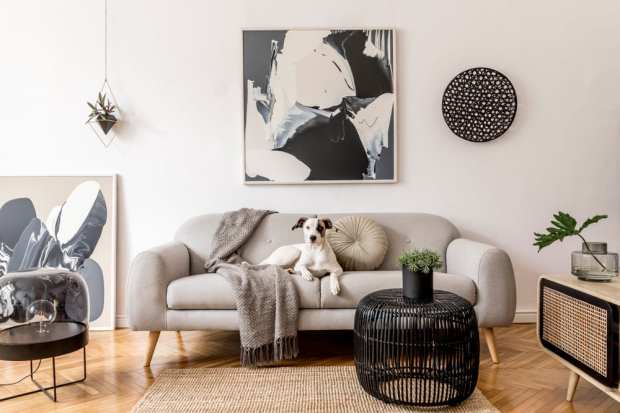Case Study: Interior Define On Leveraging The D2C Digital Shift

The D2C market has undergone rapid evolution in recent years. The lines between “digital natives” and conventional brands have blurred, with the former opening concept stores in select markets and the latter branching into online ordering.
One business that exemplifies these trends is home furniture store Interior Define. The company launched online in 2012, offering made-to-order sofas as its flagship product line. The firm has since opened seven “Guideshops,” where consumers can view furnishings and meet with decor consultants in a handful of cities, including Boston, Chicago, Los Angeles and New York. The firm was poised to open another brick-and-mortar location in Atlanta. Then COVID-19 hit.
The company was better positioned than others as the pandemic took hold, given its orientation from inception toward D2C and online ordering. Interior Define has faced its share of challenges, though, and it has adapted and enhanced its digital services in an online environment that is getting more crowded and competitive.
“During the height of COVID, we had to furlough some folks. So that meant less people to help walk [customers] through the process,” said Jill John, Interior Define’s chief customer officer. “So we really had to rely on the online experience to make sure we were answering all the questions and removing any friction that might cause someone to be frustrated in the buying process.”
Interior Define is, in this sense, in very good company these days.
A Market In Transition
The home furnishings market was hit hard in the early days of the pandemic as showrooms were subject to shutdown orders and consumers’ financial anxieties mounted. The climate was simply not conducive to big-ticket purchases like furniture. The market has rebounded in recent months, however, in no small measure due to the fact that so many professionals are spending a lot more time at home, both working and relaxing.
“People are at home; they’re looking at ways to improve their environment and their surroundings,” John observed. “I think that we are at a really competitive price point, and because of our customization abilities, we’re able to create the sofa that fits perfectly into your space.”
Interior Define has seen sales growth in recent weeks after a rough patch in the early part of 2020. The company’s well-established D2C business model also mitigated the supply chain and distribution disruptions that have led to inventory shortages at conventional retail outlets.
“Because we are made-to-order, we have not had to worry about inventory piling up,” John noted.
Other established home furnishing brands have had to adapt since the pandemic — to varying degrees of success. With opportunities for in-person transactions severely limited, online shoppers may crave more real, personalized experiences. An unengaging eCommerce site with a few thumbnail images may not suffice in the online marketplace today.
Doubling Down On Digital
Online commerce was once seen as a way for brands to augment sales, but today it is becoming the central gateway for them. Driving traffic and converting sales in the online environment, however, comes with its own challenges, particularly at the point of sale. Building a glitzy app is one thing; integrating it into back-end payment flows so that sales are at once seamless and secure is another.
Interior Define may have been better positioned than other furniture companies because of its online roots, but the firm has also had to sharpen its focus on digital services. The company makes its design specialists available through its website for virtual consultations. Its app features an augmented reality function that allows users to get an idea of what a custom-made sofa might look like in their living room. The company is trying to “bring the store experience to life online,” John said.
Interior Define’s plans for a store in Atlanta demonstrate how the company has adapted to the new reality. The shop is entirely virtual, but it is staffed by local design experts.
“We hired folks in the Atlanta area to really address that market,” John said. “Being able to be nimble and pivot to a virtual plan versus brick-and-mortar is something that’s been a great learning experience for us.”
These features are not simply bells and whistles, John added. “The creative component of … our website drives [a] considerable part of [the] conversion,” she said. This extends to purchasing options. The company supports a range of payment methods, and it offers financing at the point of sale, which, John indicated, is valuable “especially during this time.”
Prominent real estate and foot traffic count for very little in the current retail reality. Online D2C, however, may offer brands more efficient means of acquiring customers and driving loyalty. Every online shopper represents not just a potential sale, after all, but also a lifelong customer and a source of vital market insights.

